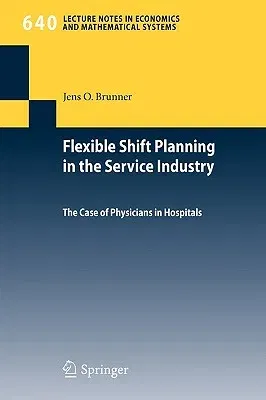The introductory chapter consists of four sections. In Sect. 1. 1 we
reveal the c- rent situation in hospitals that is faced by the
management. We address the general issue of personnel scheduling in the
service industry in Sect. 1. 2. Then we motivate our research by
considering physicians as the scheduling object. In particular, we show
the complex nature of physician scheduling in a hospital environment.
The focus of the research is presented in Sect. 1. 3. Finally, we
conclude the chapter by illustrating the outline of the thesis. 1. 1
General Economic Situation in Hospitals The mounting pressure in the
health care industry to reduce costs is forcing hos- tals and related
facilities to take a closer look at their staf?ng policies (see
[111]). A primary dif?culty in reducing personnel costs, the major
component of the budget, is the variability in demand and the need to
assign staff to ?xed shifts. Furthermore, government run facilities,
especially those in the European Union, are seeing their budgets cut in
terms of real dollars despite an aging and more acutely ill patient
population (e. g., see [96]). It has been reported that up to a third
of the hospitals in Germanyplan a reductionin staff (see [91]). The
schedulingprocess is furtherc- plicated by the generally recognized
importance of taking individual preferences intoaccount.
Moreattractiveschedulespromotejobsatisfaction, increaseproduct- ity, and
reduceturnover(cf. [2]). However, withoutimprovedschedulingprocedures
that better match supplyto demand, the level of care that theynow
providewill soon become unsustainable.


